Aortic Stenosis, Heart Failure, and Aortic Valve Replacement
JAMA Cardiology
OCTOBER 15, 2024
This narrative review analyzes associations among heart failure, aortic stenosis, and aortic valve replacement.
This site uses cookies to improve your experience. By viewing our content, you are accepting the use of cookies. To help us insure we adhere to various privacy regulations, please select your country/region of residence. If you do not select a country we will assume you are from the United States. View our privacy policy and terms of use.
 Aortic valve Related Topics
Aortic valve Related Topics 
JAMA Cardiology
OCTOBER 15, 2024
This narrative review analyzes associations among heart failure, aortic stenosis, and aortic valve replacement.

JAMA Cardiology
AUGUST 13, 2024
This randomized clinical trial evaluates the safety and efficacy of administration of protamine to reduce bleeding following transcatheter aortic valve implantation vs placebo, selective protamine administration.

Medical Xpress - Cardiology
SEPTEMBER 2, 2024
Genetic variants linked to a rare form of bicuspid aortic valve disease that affects young adults and can lead to dangerous and potentially life-threatening aortic complications have been identified by researchers at UTHealth Houston.

DAIC
JUNE 7, 2024
Getty Images milla1cf Fri, 06/07/2024 - 15:10 June 7, 2024 — Calcific aortic valve disease (CAVD) is the major heart valve disease that afflicts nearly 10 million patients globally with an annual mortality exceeding 100,000, and the numbers continue to rise.
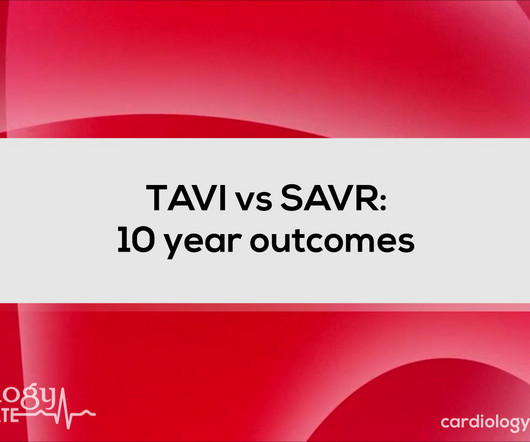
Cardiology Update
FEBRUARY 11, 2024
The NOTION trial, a pioneering study, sought to compare the long-term clinical and bioprosthesis outcomes of Transcatheter Aortic Valve Implantation (TAVI) versus Surgical Aortic Valve Replacement (SAVR) in patients with severe aortic valve stenosis (AS) at lower surgical risk.

Frontiers in Cardiovascular Medicine
AUGUST 7, 2024
Aortic Stenosis (AS) is a common condition with an estimated pooled prevalence of all AS in the elderly population at around 12.4%, with that of severe AS estimated to be around 3.4%. In the past, surgical aortic valve replacement was the primary treatment option for severe AS for decades.

Heart BMJ
JULY 10, 2024
Valvular heart disease, including calcific or degenerative aortic stenosis (AS), is increasingly prevalent among the older adult population. Over the last few decades, treatment of severe AS has been revolutionised following the development of transcatheter aortic valve replacement (TAVR).

DAIC
SEPTEMBER 4, 2024
1, 2024 — Researchers at UTHealth Houston have identified genetic variants linked to a rare form of bicuspid aortic valve disease that affects young adults and can lead to dangerous and potentially life-threatening aortic complications. tim.hodson Wed, 09/04/2024 - 15:53 Sept.

Medical Xpress - Cardiology
SEPTEMBER 3, 2024
Transcatheter aortic valve implantation (TAVI) was superior to surgical aortic valve replacement for reducing death, stroke or rehospitalization in women with severe aortic stenosis, according to late-breaking research presented in a Hot Line session today at ESC Congress 2024.

American College of Cardiology
AUGUST 31, 2024
The goal of the NOTION-3 trial was to evaluate percutaneous coronary intervention (PCI) compared with conservative therapy among patients with obstructive coronary artery disease undergoing transcatheter aortic valve implantation (TAVI).

Journal of Cardiothoracic Surgery
MARCH 18, 2024
We investigated long-term outcomes, particularly later aorta operations and overall death in patients who underwent aortic valve replacement for bicuspid aortic valve without aortic surgery.

American College of Cardiology
SEPTEMBER 18, 2024
The goal of the AVATAR trial was to evaluate aortic valve replacement (AVR) compared with conservative therapy among patients with asymptomatic severe aortic stenosis.

Journal of Cardiothoracic Surgery
JULY 29, 2024
Transcatheter aortic valve replacement (TAVR) has increased in utilization since its approval for management of aortic stenosis patients across all risk strata. We report a rare case of aortic valve leaflet av.

American College of Cardiology
MAY 24, 2024
What is the relationship between aortic valve calcification (AVC) and aortic stenosis (AS) severity in patients with suspected low-flow low-gradient AS?

Heart BMJ
JUNE 25, 2024
A transthoracic echocardiogram (TTE) revealed a mobile mass on the right coronary cusp of the aortic valve ( figure 1 , ). cm) at the right coronary cusp of the aortic valve on the long-axis and short-axis parasternal view. Figure 1 A mobile mass (1.88 Question What is the most likely diagnosis?

American College of Cardiology
FEBRUARY 12, 2024
The goal of the NOTION trial was to compare outcomes after transcatheter aortic valve replacement (TAVR) versus surgical aortic valve replacement (SAVR) in unselected patients with severe degenerative aortic stenosis.

DAIC
DECEMBER 12, 2023
milla1cf Tue, 12/12/2023 - 07:00 December 12, 2023 — Patients who received the anticoagulant drug warfarin after bioprosthetic aortic valve replacement had lower incidence of mortality and a decreased risk of blood clots, according to a retrospective study published in Mayo Clinic Proceedings.

JAMA Cardiology
MAY 14, 2024
This cohort study examines whether there is an association between osteosarcopenia and adverse outcomes, such as increased risk of mortality, in older adults following transcatheter aortic valve replacement (TAVR).
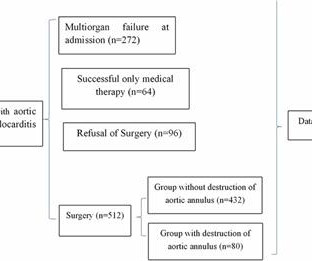
Frontiers in Cardiovascular Medicine
JANUARY 15, 2024
Objectives To evaluate the results of the inoperable and operable with aortic valve endocarditis, focus on risk factors, significance, and management of destruction of the aortic annulus in aortic valve endocarditis.

American College of Cardiology
JULY 16, 2024
The following are key points to remember from a state-of-the-art review on sutureless valves, a “wireless†option for patients with aortic valve disease.

Journal of Cardiothoracic Surgery
AUGUST 23, 2024
Surgical aortic valve replacement (SAVR) is an established therapy for severe calcific aortic stenosis. Enhanced recovery after cardiac surgery (ERACS) protocols have been shown to improve outcomes for electiv.

American College of Cardiology
MAY 29, 2024
How do mortality and morbidity compare after valve-in-valve (ViV) transcatheter aortic valve replacement (TAVR) versus redo surgical aortic valve replacement (SAVR) for intervention for a failed bioprosthetic SAVR?

Journal of Cardiothoracic Surgery
JULY 30, 2024
With the introduction of transcatheter aortic valve implantation, the role of surgical aortic valve replacement (SAVR) in elderly patients has been called into question. We investigated the short-term outcomes.

Journal of Cardiothoracic Surgery
SEPTEMBER 11, 2024
Congenital Quadricuspid Aortic Valve (QAV) malformation is a relatively rare cardiac valve malformation, especially with abnormal coronary opening and severe stenosis of Coronary Artery Disease (CAD). The pati.
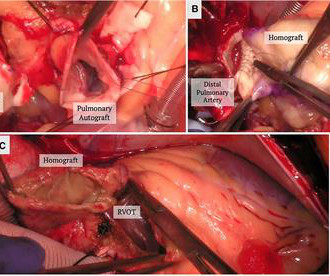
Frontiers in Cardiovascular Medicine
APRIL 10, 2024
Aortic insufficiency (AI) is a valvular disease with increasing prevalence in older patients. Traditional interventions included aortic valve replacement with either mechanical or bioprosthetic aortic valves. The modern era provides numerous options for the management of AI which is explored here.

Journal of Cardiothoracic Surgery
JULY 15, 2024
New prosthetic valves and surgical approaches that shorten operation time and improve the outcome of patients with aortic valve (AV) infective endocarditis (IE) and AV insufficiency (AVI) are crucial. The aim.
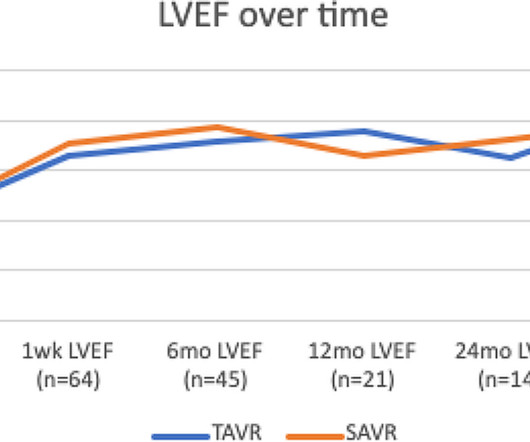
Journal of Cardiothoracic Surgery
APRIL 19, 2024
Patients with severe aortic stenosis (AS) and left ventricular (LV) dysfunction demonstrate improvement in left ventricular injection fraction (LVEF) after aortic valve replacement (AVR). The timing and magnit.

American College of Cardiology
JUNE 17, 2024
The goal of the BICATOR trial was to determine whether treatment with low to moderate dose atorvastatin is associated with progression of ascending aortic dilation, valvular dysfunction, or valve calcification in patients with bicuspid aortic valve.

American College of Cardiology
APRIL 4, 2024
The goal of the VIVA trial was to evaluate transcatheter aortic valve replacement (TAVR) compared with surgical aortic valve replacement (SAVR) among patients with severe aortic stenosis and a small aortic annulus.

Journal of Cardiothoracic Surgery
SEPTEMBER 22, 2024
The occurrence of TTP subsequent to an emergent aortic valve replacement after a TAVR procedure is exceedingly uncommon with only a f. Thrombotic thrombocytopenic purpura (TTP) is a rare hematological disorder.

Frontiers in Cardiovascular Medicine
DECEMBER 13, 2023
Background The characteristics of aortic annulus changes in aortic regurgitation (AR) patients are poorly understood, and predictive factors among aortic valve disease are yet to be established.

JAMA Cardiology
MAY 21, 2024
This cohort study evaluates mortality and morbidity outcomes among patients undergoing transcatheter or surgical replacement for failed bioprosthetic aortic valves.
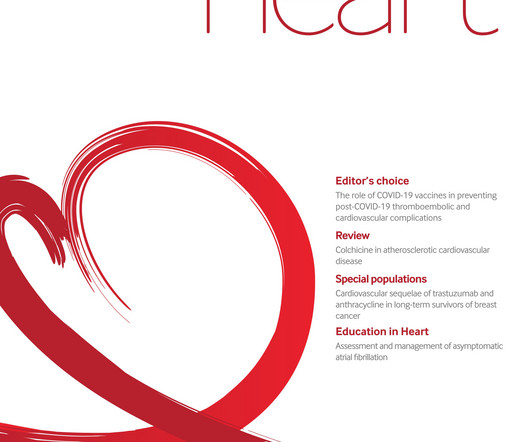
Heart BMJ
APRIL 15, 2024
CT attenuation of perivascular adipose tissue provides a measure of vascular inflammation that is linked to prognosis and has the potential to be applied to the aortic valve. We investigated perivascular adipose tissue attenuation around the aortic valve in patients with AS. HU, p=0.099).

Science Daily - Heart Disease
JUNE 5, 2024
Researchers have now proposed a molecular mechanism that links amyloid deposition in the aortic valve with degenerative calcification.

Journal of Cardiothoracic Surgery
MAY 28, 2024
Quadricuspid aortic valve (QAV) is a rare congenital anomaly characterized by the presence of four cusps instead of the usual three. It is estimated to occur in less than 0.05% of the population, with Type A (.

MIBHS
DECEMBER 30, 2022
A normal functioning aortic valve has three leaflets, usually referred to as cusps, and is positioned at the end of the left ventricle. This valve is the main pump that delivers oxygenated blood to the entire body. Today we take a deep dive into aortic valve replacement, so you can have the knowledge you need.

Frontiers in Cardiovascular Medicine
JULY 23, 2024
Given the serious conditions, the cardiac team decided to perform mitral valve replacement with a fresh allograft aortic valve. Postoperatively, the patient was promptly weaned off ECMO support, and the valve demonstrated sustained functionality throughout the long-term follow-up.

American College of Cardiology
APRIL 22, 2024
Is there a difference in clinical performance between different bileaflet mechanical aortic valve prostheses?

American College of Cardiology
AUGUST 31, 2024
The goal of the POPular PAUSE TAVI trial was to determine whether, in patients undergoing transcatheter aortic valve implantation (TAVI) who also take oral anticoagulation for a comorbid condition, continuation of anticoagulant therapy is noninferior to periprocedural interruption of anticoagulation with respect to major adverse cardiovascular and (..)
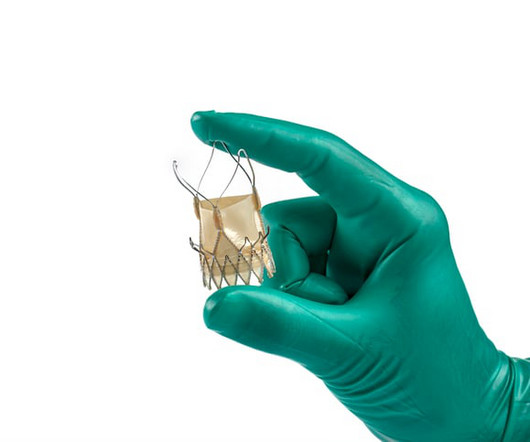
DAIC
JANUARY 29, 2024
Getty Images milla1cf Mon, 01/29/2024 - 14:24 January 29, 2024 — Despite national guidelines recommending surgical aortic valve replacement (SAVR) for patients under age 65 with severe aortic stenosis , many hospitals are still opting for a nonsurgical approach in patients under 60—possibly with poorer survival rates.
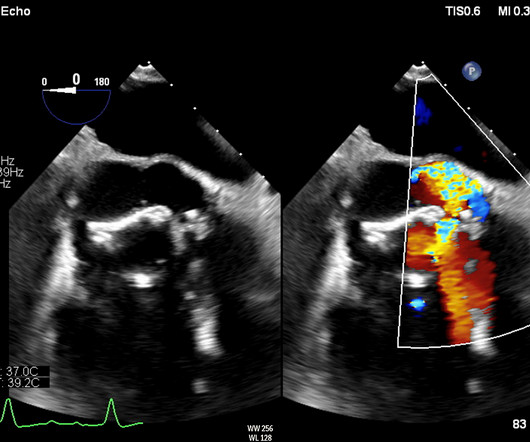
Journal of Cardiothoracic Surgery
MARCH 25, 2024
This is a case report of a 78-year-old male who underwent a sub-coronary aortic valve and root replacement due to valve dehiscence and aortic root pseudoaneurysm. The patient had complex anomalous coronary ana.

American College of Cardiology
MAY 29, 2024
In this week’s View, Dr. Eagle looks at the diagnostic value of aortic valve calcification levels in the assessment of low-gradient aortic stenosis.

American College of Cardiology
APRIL 8, 2024
The goal of the DEDICATE-DZHK6 trial was to evaluate transcatheter aortic valve implantation (TAVI) compared with surgical aortic valve replacement (SAVR) among patients with severe aortic stenosis and low to intermediate surgical risk.

Medical Xpress - Cardiology
SEPTEMBER 3, 2024
There was no apparent benefit to continuing oral anticoagulants compared with interruption in patients undergoing transcatheter aortic valve implantation (TAVI), according to late-breaking research presented in a Hot Line session today at ESC Congress 2024. The study is published in the New England Journal of Medicine.
Expert insights. Personalized for you.
We have resent the email to
Are you sure you want to cancel your subscriptions?

Let's personalize your content